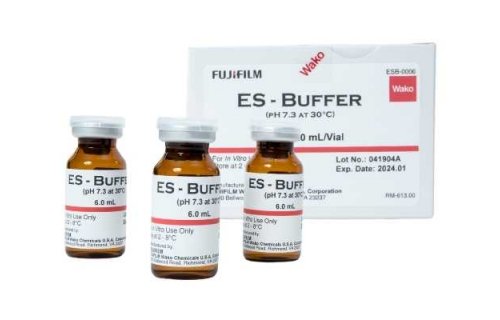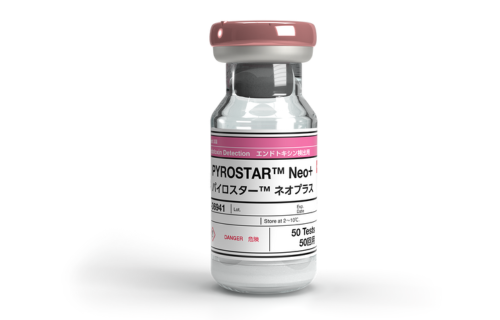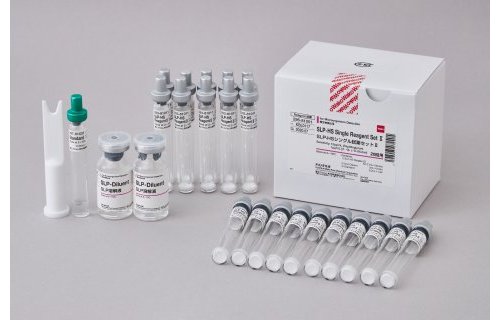Peptidoglycan contamination in pharmaceutical manufacturing
Peptidoglycan, also known as murein, is a heteropolymer. It is built up by a carbohydrate backbone of alternating N-acetylglucosamine and N-acetylmuramic acid; in addition, N-acetylmuramic acid is cross-linked to peptides. Peptidoglycan is an important component of the cell wall of most bacteria. However, its content is higher in gram-positive than in gram-negative bacterial walls, as it represents 40% of the total weight of gram-positive bacterial walls, but only 1%–10% of the total weight of gram-negative bacterial walls.
Physiological and pathogenetic roles of peptidoglycan
Peptidoglycan plays a key role in maintaining the cellular integrity of bacteria without negatively affecting their growth and division. However, it is also a pyrogen, which means that it can cause fever if it comes in contact with the bloodstream. The pyrogenic effects of peptidoglycan can be attributed to its proinflammatory and immunomodulatory actions and to its ability to elicit immune responses. In terms of its pyrogenic effects, peptidoglycan resembles endotoxin; however, the pyrogenic effect of peptidoglycan is less potent than that of endotoxin by several orders of magnitude.
Risks of peptidoglycan contamination in pharmaceutical manufacturing
A contamination of parenterally administered pharmaceutical products with pyrogens, including peptidoglycan, can have severe health consequences. Even though aseptic techniques are employed in pharmaceutical manufacturing, there are a number of possible sources of contamination. They including the air, water, or drainage; the manufacturing equipment; product containers; and personnel operations.1
Notably, many sterilization procedures may not be sufficient to fully eliminate pyrogens. Considering peptidoglycan in particular, it can be preserved as a cellular component even after heat sterilization. Moreover, if there is bacterial cell lysis, peptidoglycan polymers can pass through a sterilizing grade filter.2
Aseptic peritonitis caused by peptidoglycan contamination of icodextrin-containing dialysate
One of the most prominent examples of the risks associated with peptidoglycan contamination of pharmaceutical products was an almost 10-fold increase in cases of aseptic peritonitis reported in 2002. This led to a voluntary recall of several hundred production lots/batches of icodextrin-containing dialysis solution, with several thousand units in each batch. A subsequent investigation concluded that peptidoglycan contamination of the dialysis solution was the cause of the increased risk of aseptic peritonitis.3
Deciding when to test for peptidoglycan contamination
Since peptidoglycan exhibits pyrogenic effects at relatively high concentrations, corresponding to a high pre-sterilization bioburden, it has been suggested that such a contamination would be detected by the GMP bioburden control programs of the individual organizations.4 Therefore, the decision whether to perform specific testing for peptidoglycan is generally made after a risk assessment performed by each organization. However, endotoxin testing is carried out routinely for all parenteral pharmaceutical products. Therefore, if modifications to pyrogen testing are made, it should always be ensured that not only peptidoglycan but also endotoxin is evaluated.
Literature sources
- Vannefors C. Detection and removal of endotoxin in nanomaterial preparations. Umea University. 2022.
- Sandle T, Robert L. Evaluating Pyrogen Contamination Risk and the Need for the MAT in Pharmaceutical Processing. Rapid Microbiology. 10 May, 2021.
- Martis L, Patel M, Giertych J, Mongoven J, Taminne M, Perrier MA, Mendoza O, Goud N, Costigan A, Denjoy N, Verger C, Owen WF Jr. Aseptic peritonitis due to peptidoglycan contamination of pharmacopoeia standard dialysis solution. Lancet. 2005;365(9459):588–594.
- Akers JA, Duguld J, Gross D, Hussong D, McCullough K, Mello R, Tidswell E, Tirumalai R. Functional Challenges for Alternative Bacterial Endotoxins Tests. Part 4: Beyond Recombinant Reagents Introduction. American Pharmaceutical Review. January 21, 2022.






